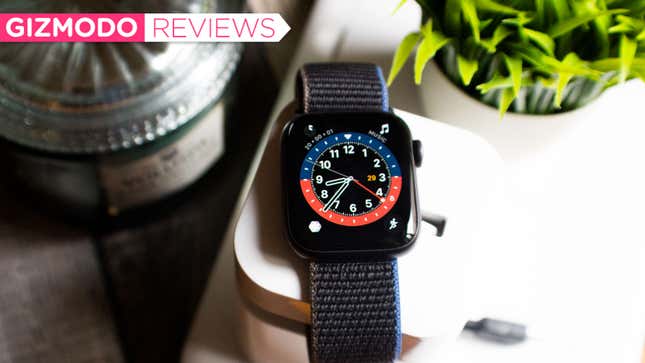
For months, it was rumored that Apple would introduce a budget smartwatch—an affordable alternative to its flagship device, much like the iPhone SE. And it did exactly that, down to the name: The $280 Apple Watch SE is a cheaper version of the $400 Series 6. But Apple also kept the $200 Series 3 in its lineup, which muddies the waters a bit when it comes to deciding which Apple Watch you should buy.
I’m here to say that most, but not all, people should go for the Watch SE. And before you ask, for the love of my unborn children, I have written a few thousand words about why you should not buy a brand new Series 3.
I say this because the Watch SE performs like a high-end smartwatch without the high-end price tag. In a nutshell, the Watch SE carries over the S5 chip from the Series 5, while sporting the same motion sensors, always-on altimeter, and optical heart rate sensor as the Series 6. It’s got fall detection and emergency calling. Apple Pay? Yup, got it. You can choose between GPS and cellular versions. It’ll notify you if your heart rate is abnormal. The major things it’s missing are advanced health features, like the electrical heart rate sensor that enables ECG and the new SpO2 sensor for blood oxygen monitoring, and the always-on display. That’s not much to sacrifice, and it’s $120 cheaper than the Series 6. Plus, for 99% of day-to-day features, it performs just as well as a Series 5—with slightly better battery life. Truly, in two weeks of testing, I almost forgot I wasn’t wearing a Series 5.
We’ve gone into great detail in several articles about watchOS 7, so I won’t rehash the new software features too much here. My lightning round impressions are: The new watch faces are beautiful! The handwashing timer is super clutch in these germy times! Sleep-tracking is very basic and kinda meh! You can finally edit your exercise and stand goals! I don’t miss Force Touch! The new exercise modes are fine, but when will the watch let me track sets and reps?
But with regard to the Watch SE, what’s most important is that watchOS 7's snazzy updates don’t bog it down at all. While there have been grumblings online that watchOS 7 is taxing on the Series 4's battery and causing random reboots on the Series 3, I had no such issues with the Watch SE. App load times are super fast. Downloading apps and updates is also speedy. Compared to my experiences with the Series 3 and Series 4, the raise to wake is snappy enough that I almost don’t miss the Series 5's always-on display.
Design-wise, if you’ve seen one Apple Watch, you know what the SE looks like. Nothing’s really changed here. Like the Series 4 and 5, it comes in either 40mm or 44mm cases. The main difference is that you have fewer choices for case material and color. You can only get silver, gold, or space gray in aluminum—no fancy stainless steel or eye-catching red or blue cases here. However, all the straps are compatible, so there’s still plenty of ways you can show off your personal flair. As for comfort, the 40mm SE is only about 0.3 grams lighter than the base Series 5—but it’s a noticeable 0.3 grams. It felt noticeably lighter on my wrist, which was appreciated when it came to all-night wear.
When it comes to fitness-tracking and heart rate accuracy, I found no major differences between my Series 5 and the Watch SE. On multiple outdoor runs, the recorded distance I got with the Watch SE were consistent with ones I’d get with the Series 5. They were also on par with results from my Fitbit Sense and the running app on my phone. For example, a 2.78-mile run logged by my phone was recorded as 2.71 miles on the Watch SE and 2.72 miles on the Fitbit Sense. That same route on a different day with the Series 5 logged 2.7 miles. For heart rate, the results I got on the Polar H10 chest strap matched that of the Watch SE within 5 beats per minute.
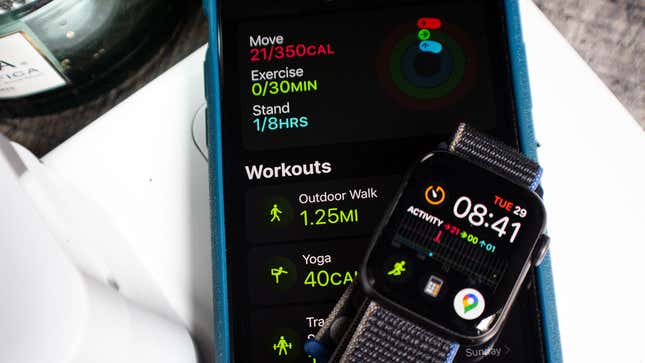
Battery life, as I briefly mentioned earlier, is improved on the Watch SE compared to older models. Anecdotally speaking, it’s also not that far off in battery life from my partner’s Series 6 (though his does last a bit longer and is much faster at charging). I’ve found that sleep-tracking usually drains the battery by around 15-20% per night. As for activity, the watch is more than capable of handling 30-90 minutes of outdoor GPS activity without crapping out before bedtime. Generally speaking, I never had an issue getting 24 hours and then some, even on my most active days. The most I got on a single charge was 36 hours. That pales in comparison to a Fitbit, but 36 hours is pretty good for an Apple Watch. It’s not perfect, however. If you want sleep-tracking, you have to put some thought into when you charge. There were a few nights where I decided to skip sleep-tracking altogether because I had less than 20% battery at bedtime and didn’t feel like waiting an extra half hour to charge.
While I truly believe most people looking for basic notifications, cellular capability, and fitness-tracking would be quite happy with the Watch SE, there are a few instances where the Series 6 is more appropriate. For example, some people have suggested the Watch SE would be great for an elderly parent or a child. I’m not here to make judgments about people who have the means to gift a smartwatch to a kid, but I disagree that this is the watch you want for an elderly parent.
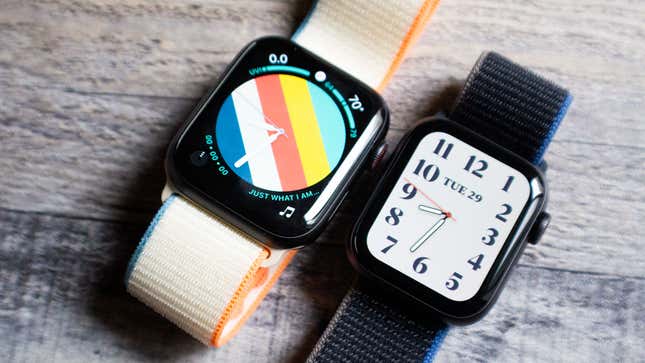
Here’s why. Although the Watch SE has fall detection, emergency calling, and the high, low, and irregular heart notifications, it lacks ECG and blood oxygen monitoring. Now, the Series 6 is not a medical device and Apple explicitly states that the Series 6 shouldn’t replace a doctor for treating conditions such as atrial fibrillation. That said, if your parent has known heart issues, you’d probably want them to have every available health-monitoring feature, including the ECG app. As for blood oxygen-monitoring, right now, it’s a very passive metric. That’s true for the vast majority of wearables that employ SpO2 sensors, not just Apple. But given that Apple has begun three clinical studies, it’s probably a good bet that in a year or two, we might begin seeing more advanced applications for the SpO2 sensor. If you want to future-proof your purchase, or just simply ensure Mom or Dad has access to the most advanced health features, the Series 6 is a better investment. This also applies to anyone who has a condition that these particular sensors might be useful for monitoring in the future (i.e., sleep apnea, etc.)
The lack of an always-on display is also worth considering. Personally, it was one of my favorite new features on the Series 5—not because I cared about seeing my notifications while my wrist was down. I don’t care about that at all. Despite my initial skepticism, I ended up loving it because when I was working out, I could easily keep track of how long I had left in a set or run. Waking up from the dim inactive screen to the active one is fluid and helps keep you in the zone. It’s not that the Watch SE is slow to wake. It’s really snappy, actually. It’s just when you’re doing time-based workouts—like, EMOMs or intervals—or if you’re holding a plank, you don’t want to have to flick your wrist up.
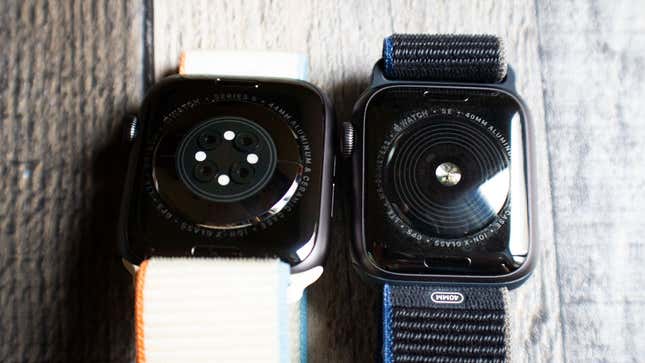
This may be a case of me knowing what I’m missing out on. However, after about two weeks, I still find myself occasionally longing for the always-on display. If you’ve never had an always-on display, or you’re upgrading from the Series 4 or older, you’re probably not going to cry over its omission. After all, we’re talking maybe a quarter of a second, or half a second difference at most. (You can check out how quickly the SE wakes up in this video.) I recognize the world’s smallest violin is playing for me right now, considering this is the biggest complaint I have about the Watch SE in my daily usage.
There’s no question that the Series 6 is better than the Watch SE. It just is. But is it an extra $120 better? That depends. If you’re upgrading from a Series 2 or older and you want the latest and greatest? Sure! You already know you love the Apple Watch; don’t torture yourself with obsolete hardware just because the updates are incremental. If you have a Series 4 that’s handling watchOS 7 well? Chill. That goes double if you have a Series 5. Please hold your horses and consider the ecological consequences of unnecessary upgrades.
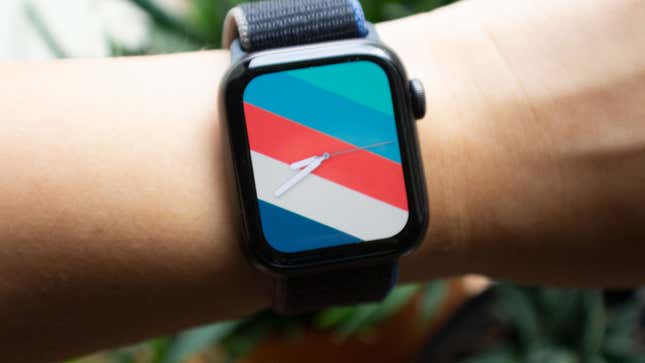
My perhaps controversial opinion is if this is your first Apple Watch and you have a clean bill of health, you should opt for the Watch SE. As we noted in our review, the Series 6 is an iterative upgrade. If you don’t already love the ecosystem, you shouldn’t throw your entire wallet at Apple just to find out if you do. You can always trade in and upgrade if future SpO2 features or ECG become relevant to your life.
Also, I have a hunch most young, healthy people don’t frequently engage with some of these advanced health features. If I am brutally honest, outside of testing, I never really opened up the ECG app when I had the Series 4 and Series 5. I didn’t have a reason to. I get 3-4 hours of cardio a week. I’m vigilant about getting regular physicals from my doctor, who says my heart is in excellent shape. Outside of Official Wearable Tester Mode, I mainly use my Apple Watch to track my workouts, set timers, heckle Siri, and get notified when my boss is pinging me on Slack. If this sounds like you, the Watch SE is more than enough to suit your needs.
But what about blood oxygen FOMO? I’ll admit this is real, but as I said earlier, this isn’t a fully baked metric yet. Let’s be honest: Unless you’re a zealous data nerd or extremely health-conscious, you’ll probably forget to check it after awhile, as it’s mostly there to help you notice when you’re way out of your normal range.
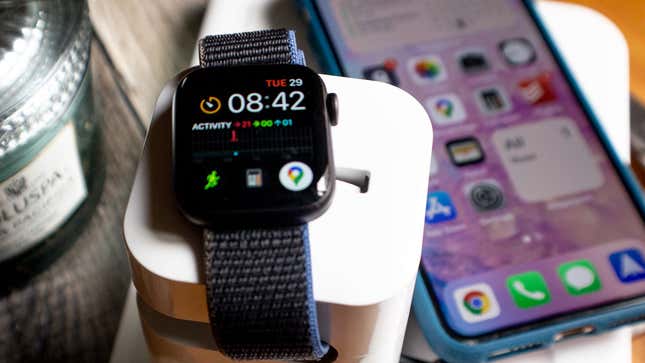
Unless your top priority is future-proofed advanced health-monitoring, or you just really love an always-on display, you should get a Watch SE. I promise you won’t feel like you’ve been cheated. If you’re not sure if you like smartwatches enough to plop down $400, then absolutely the Watch SE is the way to go. Don’t even look at the $200 Series 3. Don’t even think about it for your children, as it doesn’t even support the Family Setup feature that the cheapest watch seems perfect for. While the Series 3 was a great smartwatch, its time has passed. We thank it for its service and wish it a happy afterlife.
This advice might change down the road. Who knows? Next year’s Series 7 might sport a faster chip and even more impressive, upgraded components. The Series 8 might be even faster than that. Perhaps watchOS 9 will be too taxing for even the S5 chip. At some point, the Watch SE may not be as good of a deal if it, too, doesn’t get upgraded guts. But right now? The Watch SE punches above its weight and is the best Apple Watch if you’re on a budget.
README
- Same motion sensors and display size as the Series 6, and the same S5 processor as the Series 5.
- Heart rate notifications, fall detection, emergency calling, Family Setup, always-on altimeter, Apple Pay, and cellular capability are all there.
- You’re mostly missing premium case materials, color options, ECG, the always-on display, and SpO2 sensor for blood oxygen-monitoring.
- Performance is nearly identical to the Series 5 in daily use.
- Better battery than previous generations, but you’ll still have to charge every day.
- Unless you would benefit from advanced health-monitoring, the Apple Watch SE is the best choice for your wallet